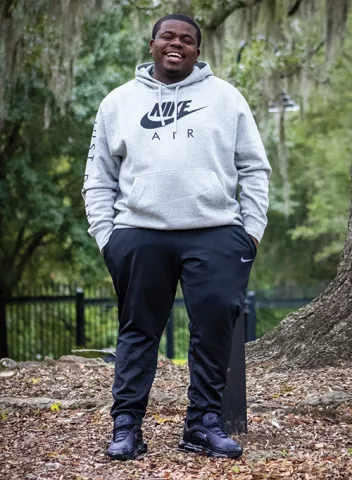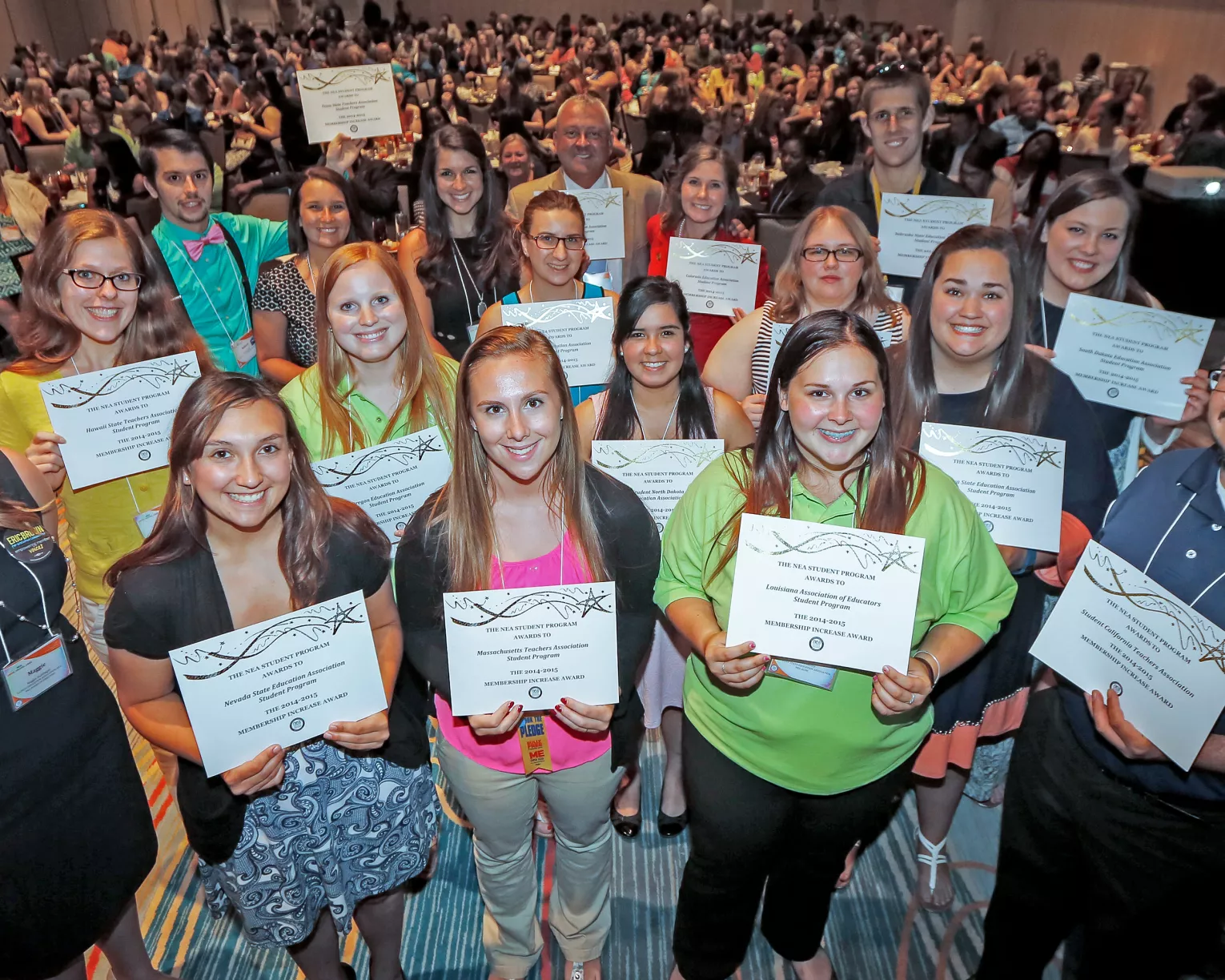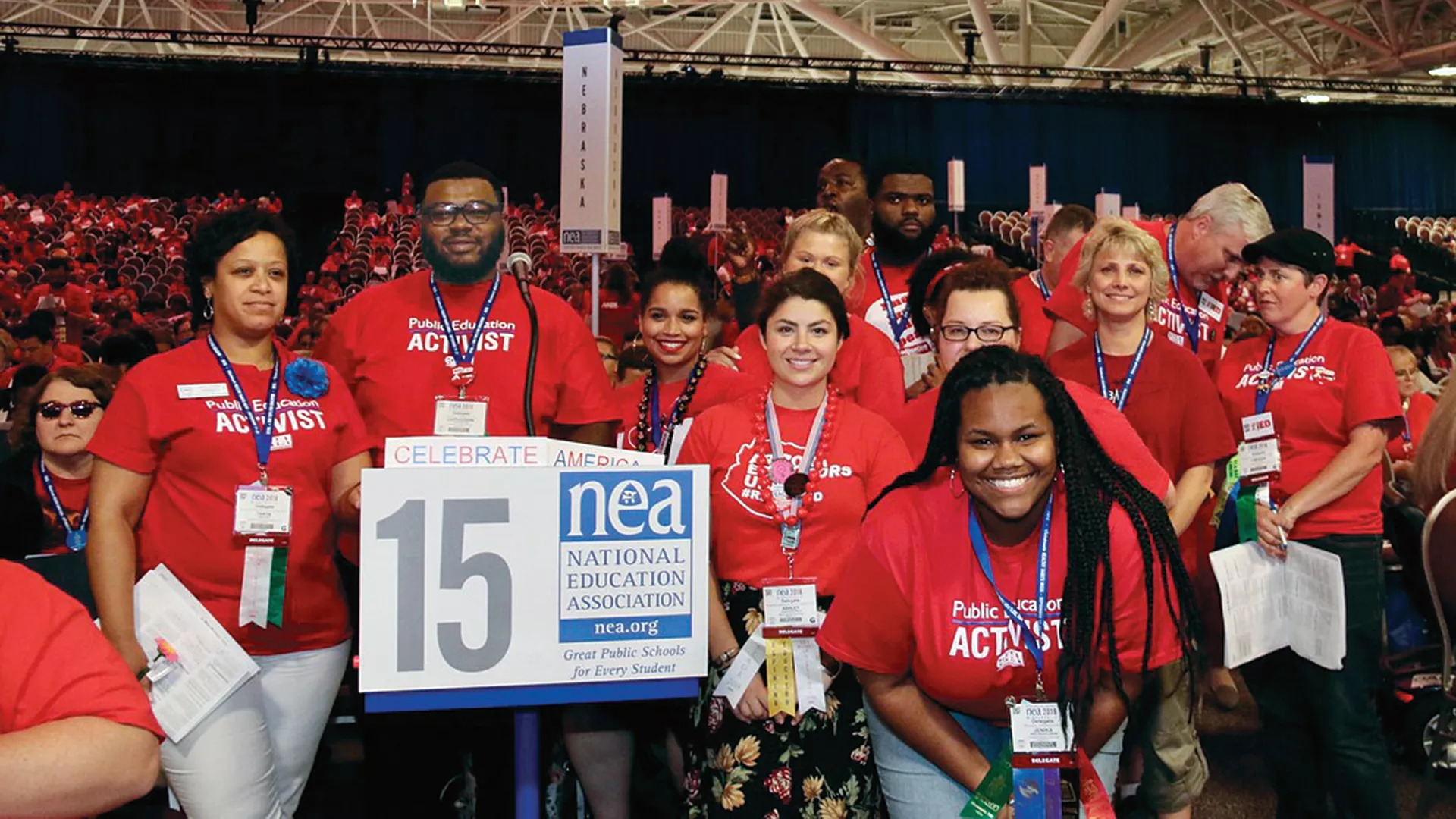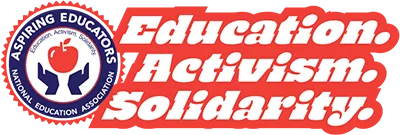During the 2018 Aspiring Educators (AE) Conference, CarVaughn Page scanned the room and didn’t see a lot of people who looked like him. A conference session that promoted a diverse panel included one Hispanic person and two White people, but no one who was Black. Another session about understanding barriers in public education began with the question, “How do you teach Black kids?” implying that Black students are the barriers.
“That pissed off everyone in the room,” says Page, who today is earning his master’s degree in public administration at Tennessee State University (TSU) and is an AE board member. “If we’re trying to understand barriers, why is that the first thing that’s thrown out? I couldn’t sit by and let this happen.”
So Page and fellow AE members Jeremy Vines of Alabama State University and Jenika Greene and Arianna Herrington, both of TSU, authored a new business item (NBI 117) at the 2018 NEA Representative Assembly (RA). NBIs are policies, resolutions, and amendments that direct much of the association’s work in the coming year. This one called for a task force—comprising aspiring educators from historically Black colleges and universities (HBCUs), Hispanic-serving institutions, tribal colleges and universities, and other institutions that serve students of color—to make recommendations to NEA regarding the recruitment of educators of color and the resources
they need to become lifelong active educators and union leaders.
One recommendation was to involve more aspiring educators of color in their campus chapters and eventually NEA-affiliated unions.
“Aspiring educators are at these campuses, and they’re engaging with students of color who are going to be teachers,” says Page, who tells new recruits: “This organization is going to give you the tools, the training, and everything you need to be a great public education teacher … and we need you to be a public education teacher to help kids who look like you.”
The work of this task force is essential to attracting more People of Color to the teaching profession, including high school students, career-changers, and everyone in between. AE members can play an important role in feeding this workforce.
Recruitment Starts Early
Jenni Benson, president of the Nebraska State Education Association (NSEA), has confronted the problem with the help of a $335,120 grant from the NEA Great Public Schools Fund. Benson and her union colleagues hope to correct the racial disparity between the state’s educators and its school population. While 30 percent of Nebraska’s K–12 students are People of Color, 96 percent of its teachers in the state are White.
In the three years since NSEA received the grant, the number of high school students in its Educators Rising program—which supports students interested in education-related careers—increased from 40 to more than 600. Benson is most proud of the fact that nearly 40 percent of them are from communities of color.
NSEA has also prioritized its AE program for college students and its Next Generation Educators program for early-career educators, with a particular focus on students of color and new teachers. The state association supports these groups by fostering membership engagement, providing professional development, and offering mentorship opportunities and classroom resources.

Support with the Praxis test—which measures an educator’s knowledge and has been particularly problematic due to cultural bias—is a priority in NSEA’s work with students of color, Benson says. That’s the case in Maryland, too, where Beth Ramey, an organizational specialist with the Maryland State Education Association (MSEA), is working to support future teachers of color from high school through placement in school positions.
“I feel we are in this unique moment when it is critical that we look at how people have very different life experiences, and a group of folks, because of the color of their skin, have roadblocks,” Ramey says. “We also tell students ‘you can do anything,’ but why would they believe it if they don’t see it right there in their school.”
MSEA is working with students to enroll in or transfer to HBCUs in the state. After the students enroll, MSEA provides tutoring, preparation for the Praxis test, and professional development in topics such as restorative practices, advocacy, teacher contracts, and hiring.
“It is all designed to help them be ready for student teaching and getting into the classroom,” Ramey says.
Aspiring Educators are Part of the Solution
Jairus Williams, president of the Student Florida Education Association (Student FEA) has seen how the work by his state organization has paid off for him and his peers.
Some 50 students and educators helped beautify a high-poverty middle school, which serves a largely Latino population. Seeing educators of color in this role had a real impact on the prospective teachers, professionals, and students, he says. “Experiences such as this … allow students to become aware of the other side of reality when it comes to colorism,” says Williams, who is a senior at Florida A&M University, an HBCU.
His union has supported him and his classmates and sought their input on issues facing teachers of color. “FEA has shown over and over again that they not only want to support aspiring educators, but they want to ensure important discussions and experiences are taking place, so Florida teachers are aware of the issues in the Black and brown communities.” That, he says, helps both students and professionals already in the field.





